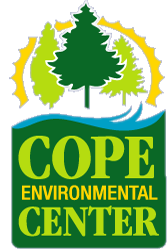PNEUMOCOCCAL VACCINE AUSTRALIAN IMMUNISATION HANDBOOK >> READ ONLINE
6.2 Pneumococcal vaccine (Prevenar 13 and Pneumovax 23) 24 6.3 Measles, Mumps Rubella (MMR) 25 6.4 Zoster (shingles) vaccine 25 Handbook App: The mobile application is known as the Australian Immunisation Handbook App (or the Handbook App for short) and can be downloaded from the Apple App Store or Google Play Store. National Vaccine Storage For more information please refer to the Australian Immunisation Handbook . Because Shingrix vaccine is inactivated (not live) it may be the preferred vaccine in people who are on immunosuppressive therapy as it can be given regardless of the other medicines being taken/used. If you have received the pneumococcal vaccine (Pneumovax-23 or Primary immunisation against pneumococcal disease in all infants at 6 weeks/2 months, 4 and 12 months of age. (1,2) 2. Additional dose at 6 monthsof age is recommended for: Preterm Infants born less than 28 weeks gestation Aboriginal and Torres Strait Islander children living in Northern Territory, Queensland, South Australia and Western Australia. The pneumococcal vaccine will help stimulate our body to make antibodies against Streptococcus pneumoniae which causes the disease. This is because vaccines contain parts of a bacterium that trigger the body to build its immunity towards the bacterium. Department of Health and Ageing Staff (2013) The Australian Immunisation Handbook 10th More vaccines are becoming available and recommended in The Australian Immunisation Handbook for use during adulthood. Currently only the seasonal influenza vaccine and the pneumococcal polysaccharide vaccine are funded under the National Immunisation Program (NIP). Zoster vaccine will be introduced to the NIP in November 2016. Pneumococcal vaccine is recommended and available free for all children at 6 weeks, 4 and 12 months of age as part of the routine child immunisation schedule. Children with medical conditions (listed below) associated with an increased risk of invasive pneumococcal disease will receive an extra dose at 6 months (i.e. at 6 weeks, 4,6 and 12 months). Material adapted from the Australian Immunisation Handbook, Australian Government Department of Health. Images of packaging reproduced with permission. To receive this publication in an accessible format The WHO estimates that 300,000 (range 200-370,000) children aged under 5 years died from pneumococcal infections, representing around 5 percent of all-cause mortality in this age group, in 2015. [ 8 ] An additional 23,000 (15-40,000) deaths were estimated to occur in children co-infected with HIV. The Australian Immunisation Handbook 9th Edition 2008 (National Health and Research Council), and Vaccination. Pneumococcal pneumonia vaccination is recommended by both Diabetes Australia and the Australian Immunisation Guidelines for those at high risk of pneumococcal pneumonia, this includes people with diabetes. Vaccination is available Overview. The Australian Technical Advisory Group on Immunisation (ATAGI) is consulting with stakeholders on proposed changes to the pneumococcal vaccination recommendations for inclusion in the Australian Immunisation Handbook, with an intention to submit the recommendation to the National Health and Medical Research Council (NHMRC) for its approval under section 14A of the National Health Like any medications, the pneumococcal vaccines can have some minor a
Comment
© 2025 Created by G1013.
Powered by
![]()


You need to be a member of generation g to add comments!
Join generation g